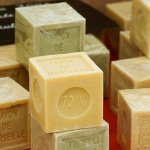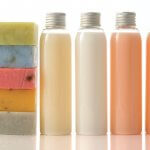While liquid, foam and gels in sleek plastic bottles with formulas no one can pronounce have been all the rage and have largely replaced traditional bars, the iconic, well loved block of soap is slowly but surely making a record comeback with sales up for the first time in a hundred years.
Modern fragrance creators, such as our master perfumers at Alpha Aromatics, cannot be entirely sure as to why this is so, but it is likely due to the rise in per capita income, increase rapid urbanization, improvement in living standard and changes in consumer lifestyle.
According to Dr Anjali Mahto, one of England’s leading dermatologists and author of The Skincare Bible: “Boutique, trendy and high-end soap brands that are visually and olfactory appealing are flooding the market and often have some high quality ingredients such as salicylic acid, hyaluronic acid and anti-inflammatory herbs and essential oils that are all beneficial for skin health.”
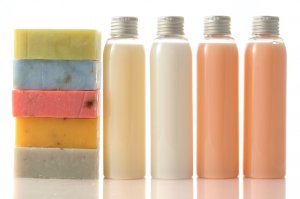
The growth of the soap manufacturing industry has consequently led to a significant increase in the need for new, specialized, creatively blended fragrances to pique the noses and purses of the consumer marketplace, a fact which has kept our perfumer teams busier than they’ve ever been mixing up natural, organic and synthetic olfactory delights such as Vanilla Orchid and Sandalwood, Pomelo and Cassis, Vanilla Orchid and Sandalwood and a number of others we’ll get into further below.
But First, A Short History Of Soap
The making of soap dates back to time immemorial and although no one knows exactly when it was discovered, legends abound. Even its name is steeped in antiquity. The word, soap, is derived from the fictional Mount Sapo, which according to Roman legend, was an ancient site of animal sacrifices.
After a sacrificial event, rain would wash away the fat and ash that collected and formed clay mixtures under the ceremonial altars and flowed down to the banks of the Tiber River.
Moses gave the Israelites detailed instructions about personal hygiene, and according to documents, ancient Egyptians bathed regularly in a soap like material that combined animal and vegetable oils with alkaline salts. By the second century A.D., the Greek physician, Galen, recommended soap for both medicinal and cleansing purposes. After the fall of Rome in 467 A.D, bathing fell out of favor.
Some historians believe that during the Middle Ages, the lack cleanliness and squalid living conditions contributed to many diseases. Soap-makers began to appear in Spain and Italy during the 7th century where it was made with goat fat mixed with Beech tree ashes.
During the same period, the French started using olive oil to make soap. During the reign of Elizabeth I, (1558 to 1603) soap consumption in England exceeded that of any other European country, with the Queen herself setting the standard by taking a bath every four weeks “whether it was necessary or not.”
Soap-making as a business enterprise began in North America began in 1608 in the American colonies. Over time, fragrances were introduced and specialized soaps for bathing, shaving, shampooing, and laundry began to appear. By the mid-nineteenth century, soap for bathing was totally different from laundry soap, with milder soaps formed in bars that were reserved for personal use.
Still another 90 years or so would pass before Alpha Aromatics appeared upon the very fragrant scene and began creating scents that were incorporated in many personal care, soaps and skin care products.

Ask these 6 questions before creating a personal care product!
A Few Little Known Facts About Soap & Soap Manufacturing
Soap-Making Dates Back To At Least 2800 B.C.
This is as evidenced by the discovery of soap-like material found in clay cylinders during the excavation of ancient Babylon. Inscriptions detailed the boiling of fats as a soap making method.
The World’s Most Expensive Bar of Soap
A family-run business in Lebanon sells the world’s most expensive bar of soap at the staggering price $2,800! Each Qatar soap bar is infused with gold and diamond powder.
Fat Is A Major Component In Many Modern Soaps
Modern soap-makers eliminate many impurities in their soap products by using fat that has been processed into fatty acids. This synthesis produces water instead of glycerin. Popular vegetable fats used in soap making include: olive oil, palm kernel oil, and coconut oil.
Soaps Were Early Sponsors of Radio Shows
The most successful radio broadcast was The Guiding Light, which began in 1937. Its sponsor was Proctor and Gamble’s White Naphta Soap. It became a tv show back in 1952, and after 72 years, was the longest running soap opera in television history.
Marseille Soap Dates Back Six Centuries
This soap has been made in the south of France for more than six hundred years. The recipe was first officially recognized in 1688 during the reign of Louis XIV, the “Sun King.”
In the 19th Century Soap Making Became An Established Art
Italy, Spain and France were early soap manufacturing hubs due to their ready supply of source ingredients, such as oil from olive trees.
The First Major American Soap Company Launched In 1806
Established by William Colgate, this company pioneered the development of perfumed soap in 1866. In 1872, they introduced Cashmere Bouquet, a soap still in production to this day.
King Louis XIV Once Ordered The Execution of 3 Soap Makers
As the story goes, King Louis sent three men to the guillotine because one of the soaps they created for him irritated his very royal skin.
Until The 1930’s, Soap Was Made By Batch Kettle Boiling
Commercial soap makers used huge three story kettles that produced thousands of pounds of soap every week. When the continuous process was introduced and refined by Procter & Gamble, it decreased production time to less than a day. This process is still in use to this day.
Commercial Soap Was Born During World War I
War time injuries required effective cleaning agents and the needed ingredients were scarce. German scientists created a new form of “soap” comprised of synthetic compounds, resulting in the introduction of detergents.
Some of The Most Popular Fragrance Oils Used In Soaps
Lavender
This lovely scent has been used for centuries in aromatherapy, perfumes, and medicine and is known for its distinct calming effect on the body. For this reason, many people seek out lavender-scented soap to bring an element of tranquillity to their hygiene practices. Using lavender soap provides a soothing way to start and end any day.
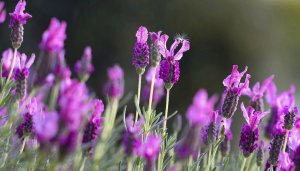
Citrus
Bright and invigorating, some of the best soaps made contain citrus elements, many of which have been developed by our master perfumers. A citrus-scented soap (lemon, orange, grapefruit.etc) is a great awakener on sleepy mornings and renders a truly clean and natural sensation. Orange is often combined with different florals to create unique blends for original soap formulations. While citrus essential oils are well known for fading, these soaps have excellent lather, possibly because of the sugar in the juice they were made with.
Chamomile
Considered a member of the daisy family, chamomile, like lavender, is known for its relaxing and soothing character. When used in a soap, it can transform a bath or morning shower routine into a stress free, serene zone. Chamomile also gently nourishes and cleanses the skin. Its light floral scent is preferred by those who don’t care for heavily perfumed soaps.
Mint
Fresh, crisp, and clean, the scent of mint is unmistakable and distinctive from any other. According to some research, it is the most popular of soap scents. Sometimes, a soap made with 100% mint can be too much, in which case, our master perfumers often pair it with rosemary and/or other woody elements.
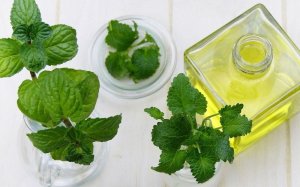
Rose
Floral scents are often found in both hand and bath soaps. The fragrance of rose in particular is timeless, and fresh. A symbol of love, romance and beauty, the scent of rose is intoxicating and unlike any other. Our formulators commonly use rose absolute essential oil in a soap because it adds a light, romantic touch that is both uplifting and inspirational.
Bergamot
A classic and refined scent found in soaps, bergamot is also very popular in many perfumes and other skin-care products. Its spicy character is unique and reminiscent of lightly floral and citrusy elements. It is not often used as a solitary aroma, and is often paired with other classic scents, such as grapefruit or basil.
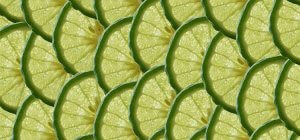
Lemongrass
Not to be confused with lemon, lemongrass is somewhat different. It is much gentler than lemon extract for the simple reason that it is a plant and not a fruit that is cultivated specifically for its lemon scent and flavor. Soaps infused with lemongrass are soothing and gentle and a good option for those who may like lemon but desire a less dramatic aroma.
Almond
Almond-based soaps are very much in vogue because they are often light and nutty and paired by our formulators with ingredients that are soothing to the skin, such as chamomile or oatmeal. They can also contain elements of vanilla.
Coconut
Coconut is a prominent ingredient in many soap and skin care formulations. Refreshing and creamy, it blends well with lemon, lavender, and mint. It also contains antibacterial properties which help rid the skin of impurities.
Sandalwood
When used in soaps, sandalwood’s sensuous and full-bodied fragrance is warming and woodsy. It is gentle enough for all skin types and is known to enhance arousal and alertness. Sandalwood treats acne, dry and dull skin and doubles as a great moisturizer. It’s also frequently used to warm up the scents used within the scent marketing industry.
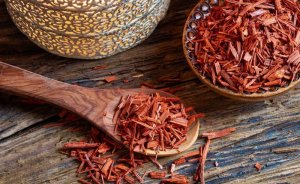
Patchouli
Our scent formulators at Alpha Aromatics rely heavily on patchouli, which is known for its spicy, rich and earthy tones when developing scents for soaps. This fragrance evokes creativity, passion and a strong sense of self. Patchouli soap can also help to regulate oily skin and dry scalp disorders such as dandruff and seborrhea. It is often found in natural commercial deodorants because it is considered to have anti-deodorizing properties.
Alpha Aromatics and Fragrances For Soap Products
We are an internationally acclaimed fragrance creation company born during the turbulent aftermath of World War II. Our mission is and always has been to “build great scents that build great brands.”
Located in suburban Pittsburgh, Pennsylvania, our unique organic, natural and designer fragrances are integral to many personal care products, candles and diffusers, fragrances for home, soaps, odor neutralizers, private label brands, industrial air fresheners, household cleaning products and fine, customized perfumes.

Explore our arsenal of odor neutralizing additives!
Our continued success is largely due to our heavy investment in the most innovative scientific tools that money can buy, and our laboratories, which are located in their 85,000-square-foot Pittsburgh Technology Center are equipped with state-of-the art innovations, such as gas chromatography, mass spectrometry, head-space analysis, distillation, extraction and quality control technology.
The following are a few of our most popular and unique fragrances we’ve made for soap makers and manufacturers, with each fragrant note explained.
Aloe And Clover
This fresh, green fragrance with a top note of dewy citrus brings to mind summer herbs growing wild in a verdant field. This quickly gives way to a heart note comprised of sharp eucalyptus leaf, green aloe and intoxicating, night blooming jasmine. The scent finishes with a base note of fresh, slightly pungent coriander and woody sensual musk
Huckleberry Sugar Blossom
Opening with a top note of strong, pungent huckleberry, juicy, succulent orange and tart, uplifting grapefruit, this soon blends into a heart note of sweet, rich jasmine and creamy gardenia. The scent completes with a base note of sensual musk, light, fresh and slightly earthy sugar cane, and warm, rich honey-like amber.
Pomelo And Cassis
Inspiring memories of summers down by the shore and fresh linen sheets float along the top note of this fragrance initiated by sharp, grapefruit infused citrusy pomelo, sweet, dark, berry-like cassis and dry, aromatic citron. These elements soon surrender to a heart note of sweet, rich jasmine, spicy and romantic rose and musty, green cyclamen. A woody base note of enticing vanilla finishes the scent.
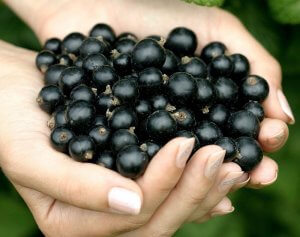
Black Currant Persimmon
This memorable aroma begins with a top note comprised of velvety, aromatic, peach, light, sweet and tart black currant, and crisp, clean lemon. This soon fades into a middle note of sugary, rich persimmon, honeyed, full-bodied jasmine and floral, herbal geranium. The base note of sensual white musk and sun-dried wood gracefully mark the end of the fragrance.
Vanilla Orchid And Sandalwood
A touch of ocean air and fresh, fruity cassaba melon comprise the top notes of this lovely fragrance. These soon fade into an elegant heart note of luxurious, alluring vanilla, flowery, powdery orchid and creamy, intoxicating gardenia. The fragrance ends with a base note of sun-dried, ozonic driftwood, warm, rich amber and woody, sharp and powdery sandalwood.
In Conclusion
Soap, whether in liquid or bar or any other form, is here to stay, and so is Alpha Aromatics.
If you own or operate a soap manufacturing company or brand, or you’re a senior chemist, product developer, product formulator, business development manager or product development scientist working with a soap brand or company, and you would to incorporate any of the above-mentioned fragrances into your product line or create a customized line of scents, call our teams today for advice on fragrances for your line of soaps and related skin care products.
Final thought about soaps: Soap is to the body what laughter is to the soul. ~ Pinterest
 alpha aromatics®
alpha aromatics®